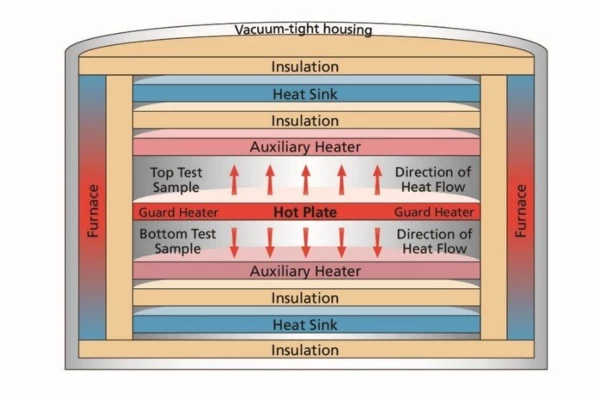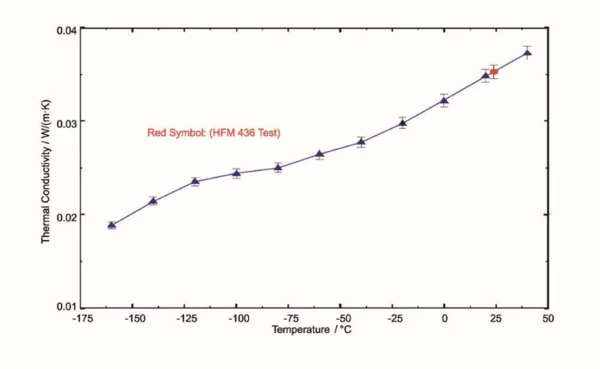methods
Guarded Hot Plate (GHP)
based on well‐known, standardized guarded hot plate techniques, e.g., ISO 8302, ASTM C177 or DIN EN 12667
The Guarded Hot Plate instrument measures the Thermal ConductivityThermal conductivity (λ with the unit W/(m•K)) describes the transport of energy – in the form of heat – through a body of mass as the result of a temperature gradient (see fig. 1). According to the second law of thermodynamics, heat always flows in the direction of the lower temperature.thermal conductivity of insulation products.
The GHP principle is based on an absolute measurement method and therefore requires no calibration standards. It offers optimum accuracy in the available temperature range.

The hot plate and the guard ring are sandwiched between two specimens of the same material and approximately the same thickness (Δx). Typically, two specimens are preferred for a measurement, but it is also possible to work with only one test specimen.
Auxiliary heaters (cold plates) are placed above and below the samples. The cold plates are heated such that a precisely defined, user-selectable temperature difference (ΔT) is established between the hot and the cold plates and thus also over the entire sample thickness.
As soon as thermal equilibrium is reached, the power input in the hot plate with area A is measured.
The Absolute GHP Method
The great advantage of the GHP method is that it is an absolute method; i.e., no calibration or correction is required at all. The Thermal ConductivityThermal conductivity (λ with the unit W/(m•K)) describes the transport of energy – in the form of heat – through a body of mass as the result of a temperature gradient (see fig. 1). According to the second law of thermodynamics, heat always flows in the direction of the lower temperature.thermal conductivity values result in the stationary state simply from the:
- precisely measured total power input into the hot plate, Q,
- average sample thickness, d,
- measurement area, A, and
- mean temperature difference, ΔT, along the sample or the two samples, as the case may be (the factor 2 results for two samples):
The GHP method is described in, e.g., ISO 8302, ASTM C177 or DIN EN 12667. NETZSCH offers the GHP 456 Titan®®.


